Even though insects generally occupy the top spots in our list of disliked creatures, several mammals also earn their place in this notorious ranking. Our animosity towards some of these animals can be attributed to their intrusive behavior in our dwelling areas and the subsequent havoc they wreak on our properties – a behavior not unlike that displayed by certain humans. We loathe others due to their lethal attacks. Furthermore, there are certain mammals that we detest due to their ability to carry and spread diseases, resulting in the deaths of millions of people each year. Interestingly, it seems there is at least one mammal we dislike for reasons that are not immediately obvious. It’s difficult not to feel some empathy for these universally disliked mammals.
The amount we dislike animals differs strongly by culture and geographic location. For instance, most Americans love elephants because they see them in zoos or on documentaries. However, plenty of Indians living alongside the largest land mammal hate them because they destroy farmland and have even been known to drunkenly kill villagers. (See the list item about elephants for more on their drunken killing spree which caused a village uproar and witchhunt.)
Though some animals such as #14 may be more expected on this list, you may be surprised to find that some of the best-known animals in the world are also the biggest nuisances. Including everything from the king of the savanna to one of our closest companions, these are the 25 Most Hated Mammals on Earth.

Hyena
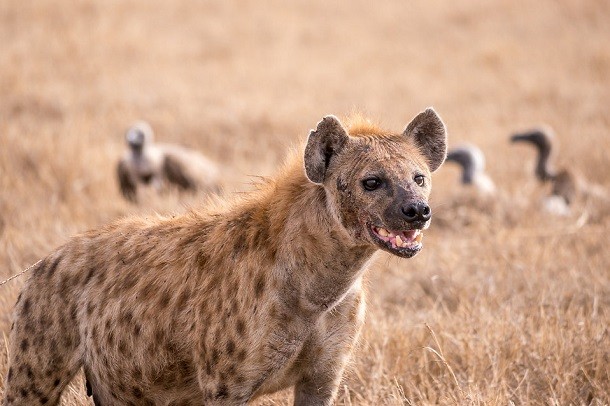 Source: Conservation Institute, Image: Freestockphotos.biz
Source: Conservation Institute, Image: Freestockphotos.biz The hyena is the first to start off our list of the top 25 most hated mammals known to man. Though primarily a scavenger, the hyena can also hunt for prey if there’s not enough carrion (dead animals) around. During periods (such as war) when there are high human casualties, hyenas have been known to develop a liking for human flesh and even hunt live humans if not enough corpses are around.
Red fox
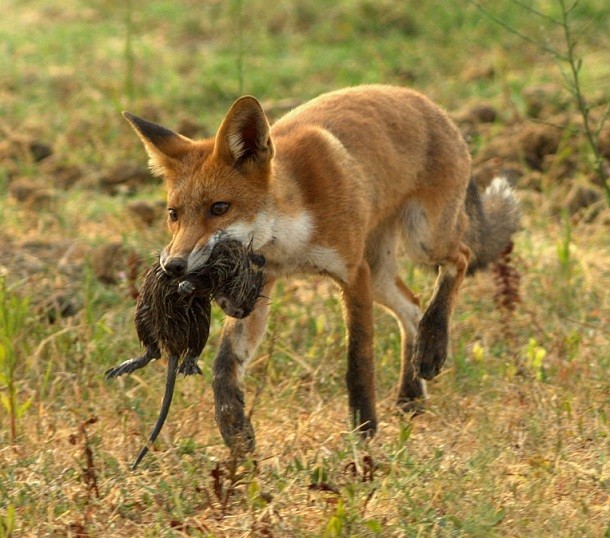 Source: Smithsonian, Image: Wikimedia
Source: Smithsonian, Image: Wikimedia Though it may look cute, the red fox is more of a menace. Kept in check (and keeping small mammals in check) in its native habitats of Eurasia, North Africa, and Central America, the red fox has become an invasive species in Australia where it was introduced in the mid 1800’s for hunting. The fox often kills newborn lambs and carries rabies. With a range of 190 miles (305 km), the red fox’s effects can be devastating on an ecosystem.
Brushtail Possum
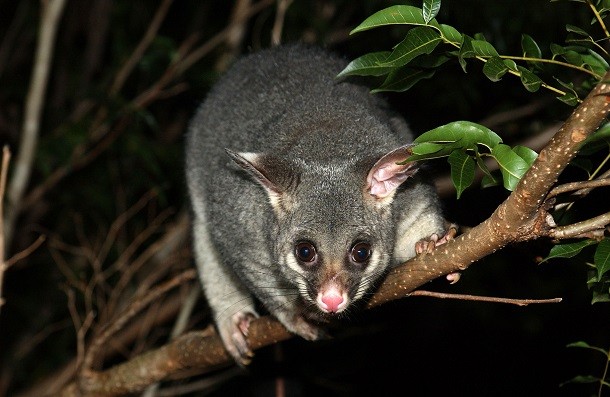 Source: Smithsonian, Image: Wikipedia
Source: Smithsonian, Image: Wikipedia The brushtail possum is a native mammal to Australia and was introduced to New Zealand in the 19th century. Since then, the animal has ravenously devoured eucalyptus leaves and threatened many local bird species. Even worse for Kiwi farmers, possums are the main method of transferring bovine tuberculosis which can quickly rip through a herd. For the benefit of Kiwi beef, it’s probably best we keep hating this animal.
Honey Badger
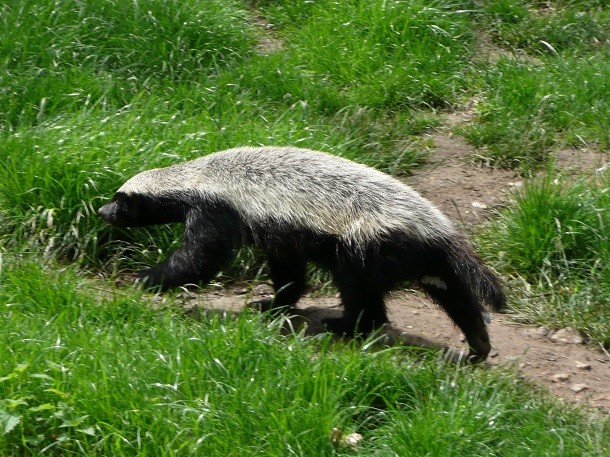 Source: National Geographic & Rosevear, Donovan Reginald (1974). The Carnivores of West Africa, Image: Wikipedia
Source: National Geographic & Rosevear, Donovan Reginald (1974). The Carnivores of West Africa, Image: Wikipedia Popularized by a comedic YouTube video of a man narrating a day in the life of the “crazy nastya** honey badger”, the honey badger holds the Guinness Book of World Records prize as “the most fearless animal on the planet”. Known to send even lions scurrying off their prey, the honey badger is incredibly difficult to kill due to its loose and tough skin. Neither dogs nor machetes have proven effective against this beast which easily can rip up hen houses. Even worse, the honey badger is known for surplus killing whereby it kills way more prey than it can eat.
Nutria
 Source: Smithsonian & The Times-Picayune, Image: Wikipedia
Source: Smithsonian & The Times-Picayune, Image: Wikipedia Sounding more like the latest health food bar, the nutria (or coypu) is a semi-aquatic rodent which mildly resembles the beaver. Once cultivated for their fur, large feral populations now roam territories outside its native South America. Though only a herbivore, the nutria devours river plant stems and has now become the most common herbivore in Louisiana’s marshes. Everyone down in the bayou hates the creatures which contribute to Louisiana’s loss of a football field-sized patch of wetland every hour, partially by destroying local dykes and irrigation systems.
Deer
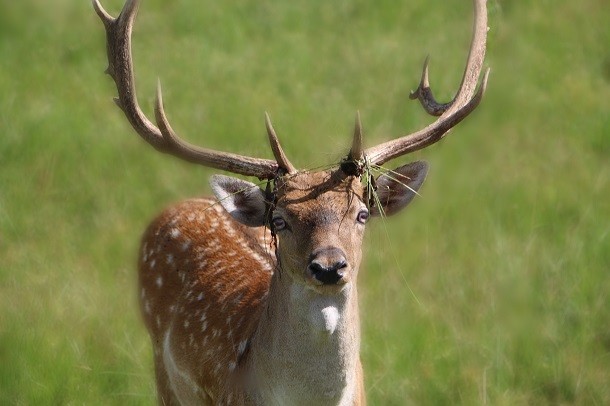 Source: Encyclopaedia Brittanica & National Highway Traffic Safety Administration, Image: Wikimedia
Source: Encyclopaedia Brittanica & National Highway Traffic Safety Administration, Image: Wikimedia Deer are some of the most hated animals in the world, especially on roads which wind through forests and wooded areas. Known for crossing the road just as a car passes by, deer cause about 1.5 million collisions annually, resulting in $1.1 billion dollars of damage and the death of about 150 people in the United States alone.
African Wild Dog
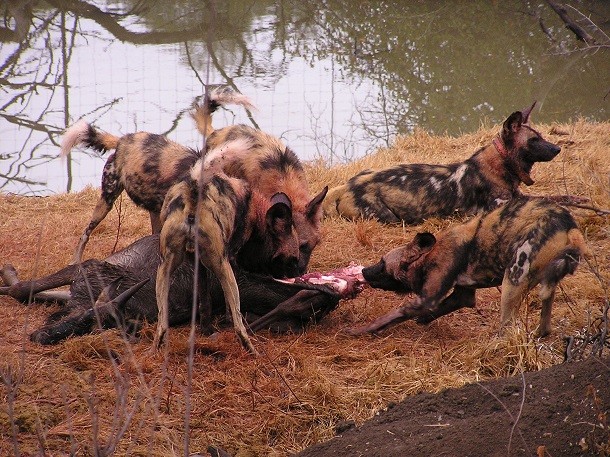 Source: National Geographic & Littman, Enno (1910). "Publications of the Princeton Expedition to Abyssinia", Image: Wikipedia
Source: National Geographic & Littman, Enno (1910). "Publications of the Princeton Expedition to Abyssinia", Image: Wikipedia Also known as the African hunting dog, the African wild dog is one of the best hunters on the savanna. Whereas lions only come back with a kill on about 10% of hunts, this dog has a success rate of about 80%, making it one of the most efficient and deadly African predators. (Ironically, one the biggest and most successful predators of the African wild dog is the lion.) Some groups in Africa have turned fear into respect for the beast, with locals in Ethiopia formerly believing that killing the wild dog with a spear would lead to it dipping its tail in the blood and whipping it at its attacker, causing instant death. Sounds pretty scary.
Monkey
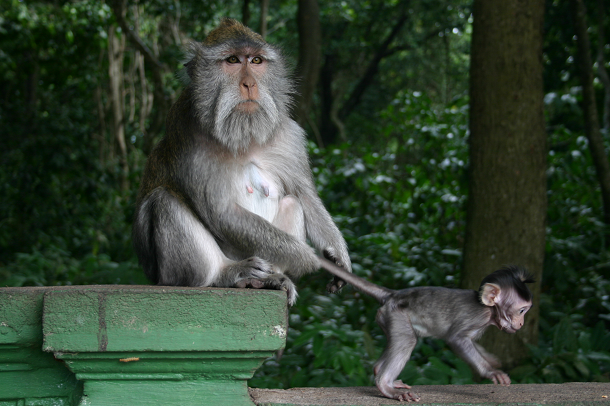 Source: International Journal of Primatology & African Journal of Ecology, Image: dewimiutia via Flickr
Source: International Journal of Primatology & African Journal of Ecology, Image: dewimiutia via Flickr Though they are our closest relatives, monkeys are seriously hated in some parts of the world, especially Asia. Though revered in India as the monkey god Hanuman, monkeys have been known to infect humans with rabies and destroy crops. In temples and tourist spots throughout Southeast Asia, monkeys have been known to attack humans.
Platypus
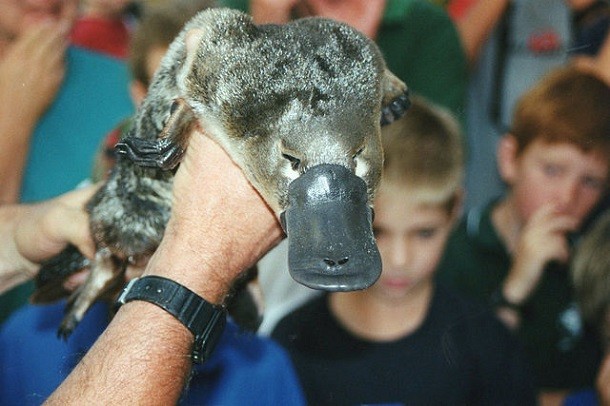 Source: National Geographic & Cosmos, Image: Wikimedia
Source: National Geographic & Cosmos, Image: Wikimedia Not many mammals in our world are venomous, but the platypus is one of them. This egg-laying mammal (one of only five) is endemic to eastern Australia. With a spur on its rear foot, the platypus can injects its prey (or a human) with venom so powerful it can kill a dog. The venom is not lethal to humans but has been reported to cause excruciating pain, sometimes causing the victim to fall unconscious. Some people stung by the platypus even report a heightened sensitivity to pain that can last many months.
Kangaroo
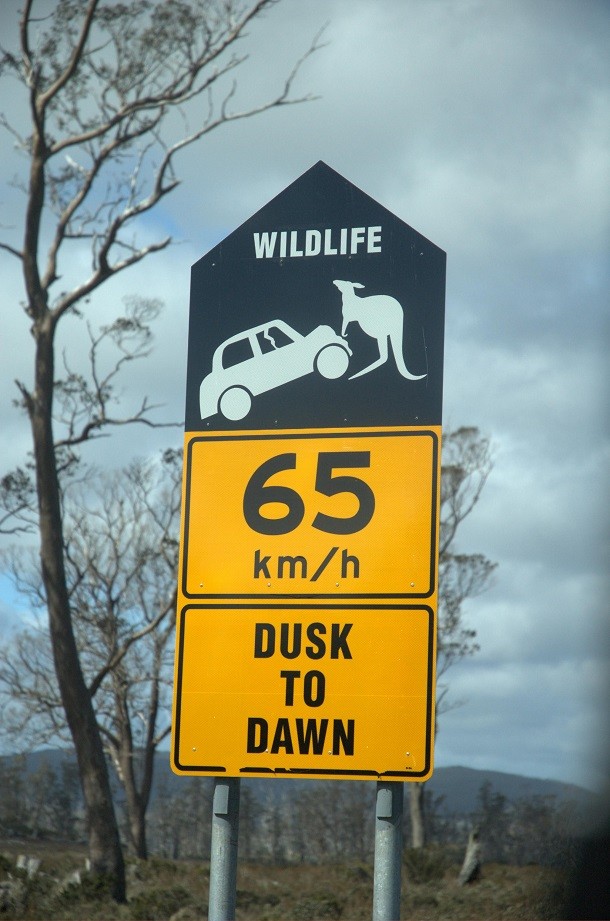 Source: Australian NCIS, Image: Wikipedia
Source: Australian NCIS, Image: Wikipedia The Australian highway version of a deer, kangaroos are also perplexed by headlights and are often hit by traveling cars in more remote areas. Hitting a kangaroo can easily destroy a small car. In fact, 18 Australians died last decade from roo-related collisions.
Bat
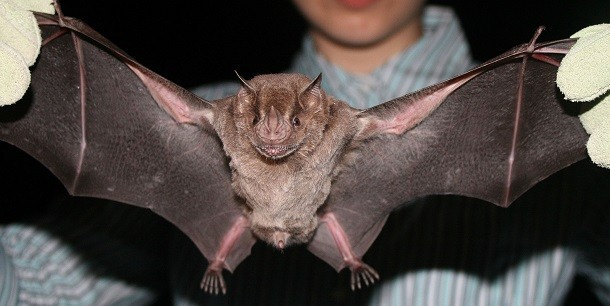 Source: Animal Planet, Image: Wikipedia
Source: Animal Planet, Image: Wikipedia Yes, a bat is a mammal rather than a bird and most of us are pretty freaked out by these nocturnal creatures. Though often dramatized at Halloween-time as blood suckers, bats rarely bite humans and actually prefer insects to blood. They act as an effective pest control, plant pollinator, and natural fertilizer producer. If there’s any mammal on this list we should love rather than hate, it’s the bat.
Short-Tailed Weasel
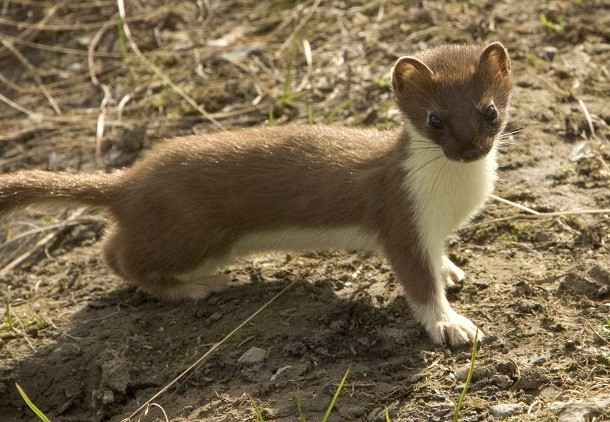 Source: Smithsonian, Image: Wikimedia
Source: Smithsonian, Image: Wikimedia The cute-looking short-tailed weasel is anything but cute! These greedy little mammals have hunting instincts bigger than their stomachs and often kill way more than they can eat. They can also swim up to a mile in the ocean and can wander up to 40 miles (65 km) at one time. In New Zealand, these hated animals have been responsible for the extinction of quite a few bird species.
Feral Cat
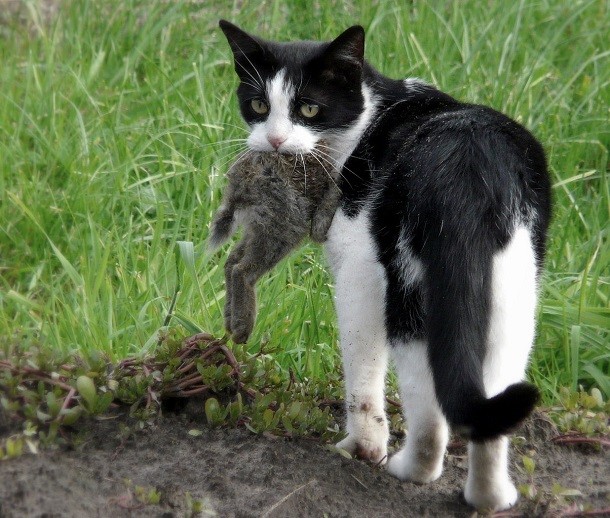 Source: Smithsonian, Image: Wikipedia
Source: Smithsonian, Image: Wikipedia One of humanity’s most common house pets, cats are generally though of as harmless and docile – though a bit lazy – creatures. But when cats go feral, meaning when house cats become wild cats, they can be quite the pest. One study found that 62-82% of feral cats carried toxoplasmosis: a parasite which causes neurological damage to marine mammals. Beyond their danger to health, feral cats have also hunted the Okinawa woodpecker and Cayman Island ground iguana into endangered statuses.
Dog
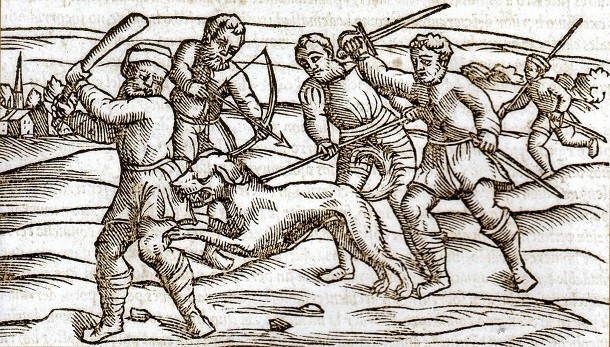 Source: Encyclopaedia Brittanica & The Telegraph, Image: Wikipedia
Source: Encyclopaedia Brittanica & The Telegraph, Image: Wikipedia Though we know them as “man’s best friend”, maybe we should rethink our relationship with dogs. In a period of just over 30 years up to 2013, over 450 people were killed by dogs in Canada & the U.S. and over 2,400 people were maimed. Furthermore, in India alone, about 20,000 people die each year due to rabies infections from dog bites, the source of 90% of human rabies infections globally.
Hippopotamus
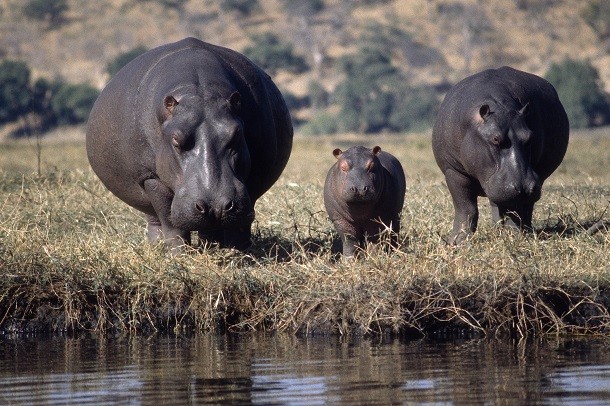 Source: ABC News & BBC News, Image: Wikimedia
Source: ABC News & BBC News, Image: Wikimedia Named from the ancient Greek words for “river horse”, the hippopotamus is one of the deadliest animals in Africa. Its unpredictable nature and aggression has led it to charge quite a few boats and humans. For example, in 2014, a hippo charged a boat near Niger’s capital which led to the death of 13 people. In Colombia, a local druglord decided to raise four hippos. After his death, his estate was abandoned and the hippos multiplied rapidly. About 20 years later, the population was almost five times as large and some of the hippos even escaped and killed nearby cattle and attacked humans, making it quite a hated animal in the area.
Goat
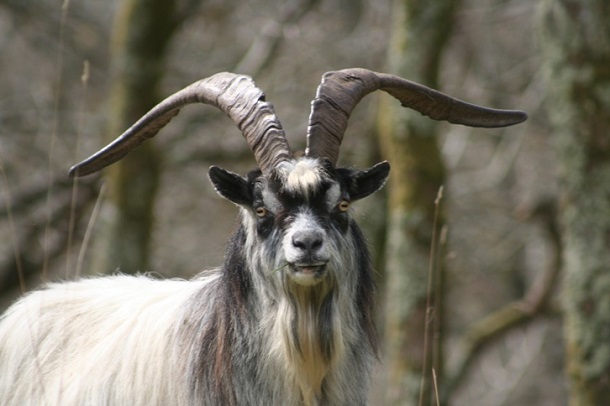 Source: Smithsonian, Image: Wikipedia
Source: Smithsonian, Image: Wikipedia The goat: though it might seem like a simple animal which goes great with Indian curry, this is one tough animal. Domesticated in western Iran over 10,000 years ago, goats can survive some of the least hospitable climates on Earth. Add in a rabid appetite and ability to consume almost any tough plant matter and herds can ravage small islands and lead to ecosystem collapse. (Goat herds have been known to grow so large they cover an area up to 12 miles across.)
Mongoose
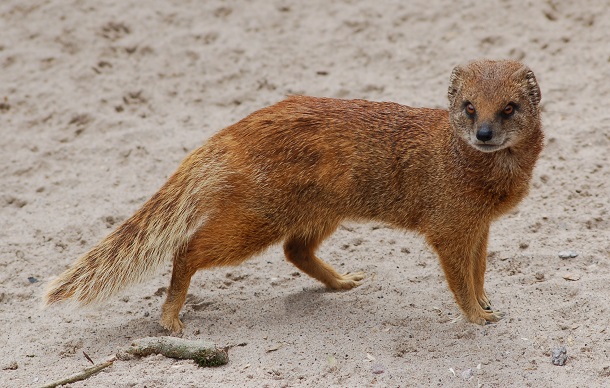 Source: Smithsonian, Image: Wikimedia
Source: Smithsonian, Image: Wikimedia Originating from central and southern Asia, the mongoose is a wily predator. Introduced to islands such as Mauritius and Fiji to wipe out surging rat populations on sugar cane plantations, the mongoose took a liking to other local foods it found and now both the rat and mongoose are invasive and destroying the ecosystem.
Lion
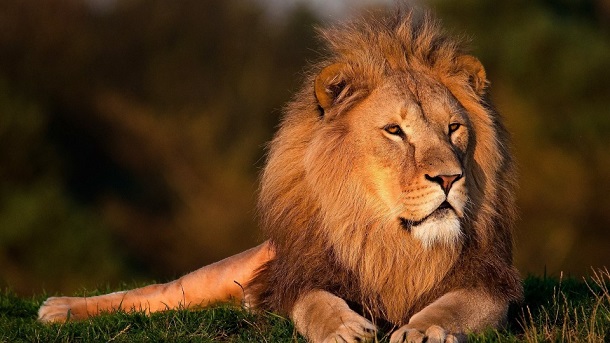 Source: Encyclopaedia Brittanica & Patterson, Bruce D. (2004). The Lions of Tsavo: Exploring the Legacy of Africa's Notorious Man-Eaters., Image: Pixabay
Source: Encyclopaedia Brittanica & Patterson, Bruce D. (2004). The Lions of Tsavo: Exploring the Legacy of Africa's Notorious Man-Eaters., Image: Pixabay Though many people think of lions as only hunting prey such as zebras and wildebeests, lions have caused quite a few human deaths as well and actually enjoy human meat. One of the most shocking recent deaths was when a tourist at a South African game reserve was mauled by a lion through an open car window. From 1990-2005, lions are known to have killed 871 people in Tanzania alone; these days, they still regularly kill 100 people per year there. In one of the most gruesome lion attacks, two lions killed 28 railway workers in Kenya in 1898.
Raccoon
 Source: Department of Forestry and Natural Resources, Purdue University & University of Halle-Wittenberg, Image: IntoConnection via YouTube
Source: Department of Forestry and Natural Resources, Purdue University & University of Halle-Wittenberg, Image: IntoConnection via YouTube Often known for their mischievous behavior knocking over trash bins and eating food waste, raccoons can pose another major annoyance to humans. In many communities, raccoons set up dens in warm attics, causing thousands of dollars of damage. Raccoons are also disliked by farmers, both for feeding on chickens or ducks and their eggs and for damaging corn plants. It’s estimated around 87% of damage to corn is raccoon-related.
Coyote
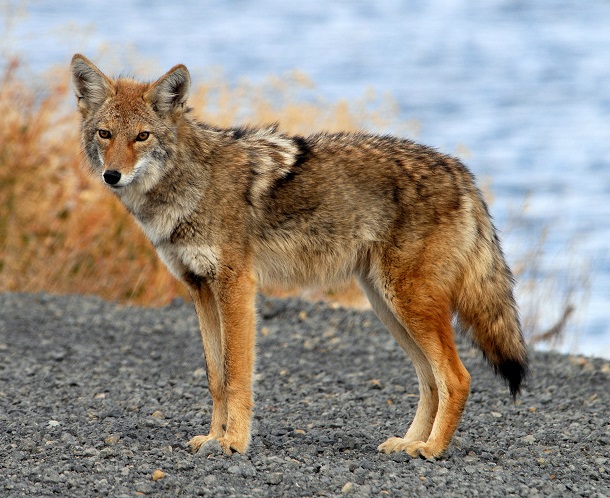 Source: Animal Planet, Image: Wikimedia
Source: Animal Planet, Image: Wikimedia The coyote is one of, if not the greatest, menace to ranchers’ livestock. Related to the grey wolf, coyotes used to hunt livestock only at night but have since become braver as human communities have expanded. (If you ever come across a coyote, making as much noise as possible will help chase it off.) One person who will forever hate coyotes is Jessica Simpson who had her beloved maltipoo dog snatched by one in 2009.
Skunk
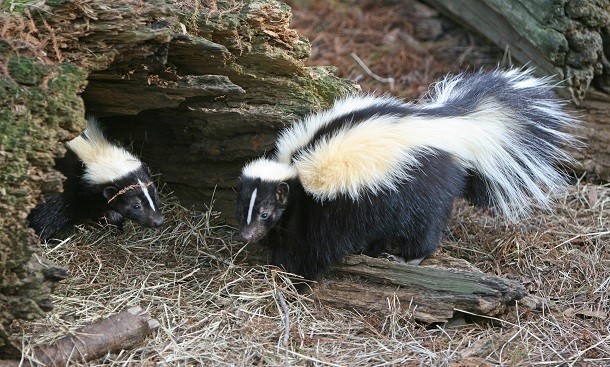 Source: Government of Alberta, Image: Wikipedia
Source: Government of Alberta, Image: Wikipedia Known in cartoons as Pepé Le Pew, the striped skunk is most known for its noxious odors. When threatened, skunks shoot sulfurous chemicals as far as 10 feet (3 m) from their anal scent glands. The smell is so strong, it can be traced a mile (1.5 km) down wind. Skunks are generally cautious about using this defense mechanism since the chemicals take up to 10 days to be replenished.
Rat
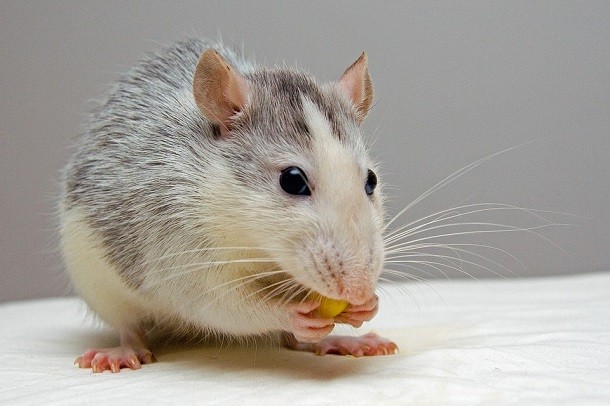 Source: Smithsonian, Image: Pixabay
Source: Smithsonian, Image: Pixabay Rattus rattus (yes, that is its scientific name) is one of the most hated mammals in the world. Expert scavengers, the nocturnal rat is responsible for bringing infected fleas to Europe which launched the bubonic plague. Today, rats continue to carry a host of disease and have even been responsible for the extinction of a host of native species of reptiles, invertebrates, and birds such as the Tahitian sandpiper.
Cape Buffalo
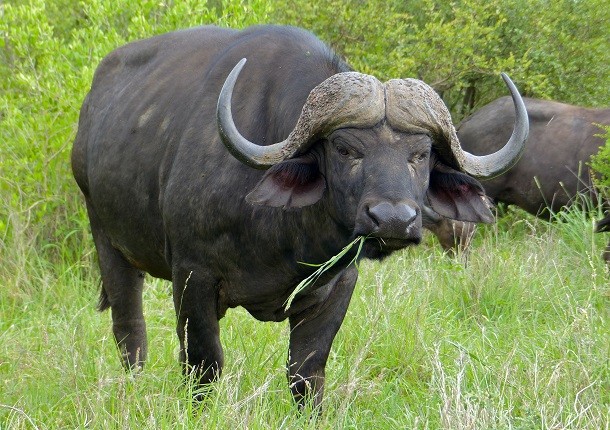 Source: Conservation Institute, Image: Wikimedia
Source: Conservation Institute, Image: Wikimedia Widespread across African grasslands, the cape buffalo is responsible for more fatalities in Africa than any other large animal. Able to rush at 40 mph (65 kph) with its full ton of weight, the cape buffalo sometimes charges even when unprovoked. Scarily, this massive beast won’t stop charging even if it’s shot through the heart and it has been known to attack and kill lions.
Elephant
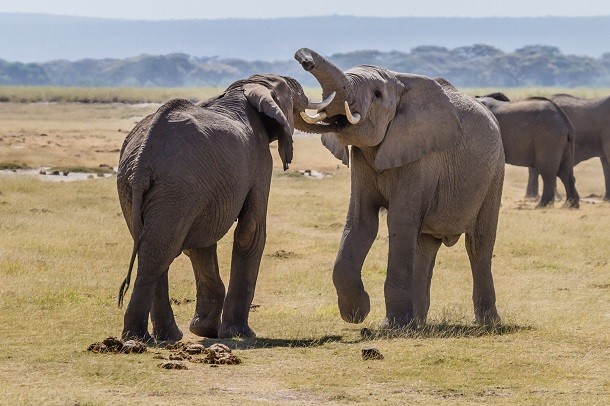 Source: BBC News & Sydney Morning Herald, Image: Wikipedia
Source: BBC News & Sydney Morning Herald, Image: Wikipedia Though one of the most well-revered animals on the planet, elephants are also among the most hated. Despite Western peoples’ generally positive views of the largest land mammal in the world, Eastern peoples often find the animals to be a nuisance. Highly intelligent, elephants have been blamed for revenge killings in Africa and have even drunkenly killed six villagers in India’s northeast after becoming intoxicated on local rice beer. In retaliation, the villagers killed up to 200 elephants.
Human
 Source: Dictionary.com, Image: Wikipedia
Source: Dictionary.com, Image: Wikipedia We’d be remiss if humans, the mammal at the top of the food chain, didn’t make this list. Humans have hated other humans since the dawn of time, largely due to competition over food, territory, and mates. There’s even a word for a “hatred, dislike, or distrust of humankind”: misanthropy. With all the tension going on around the world, it seems human-human hate may be at an all-time high.



























